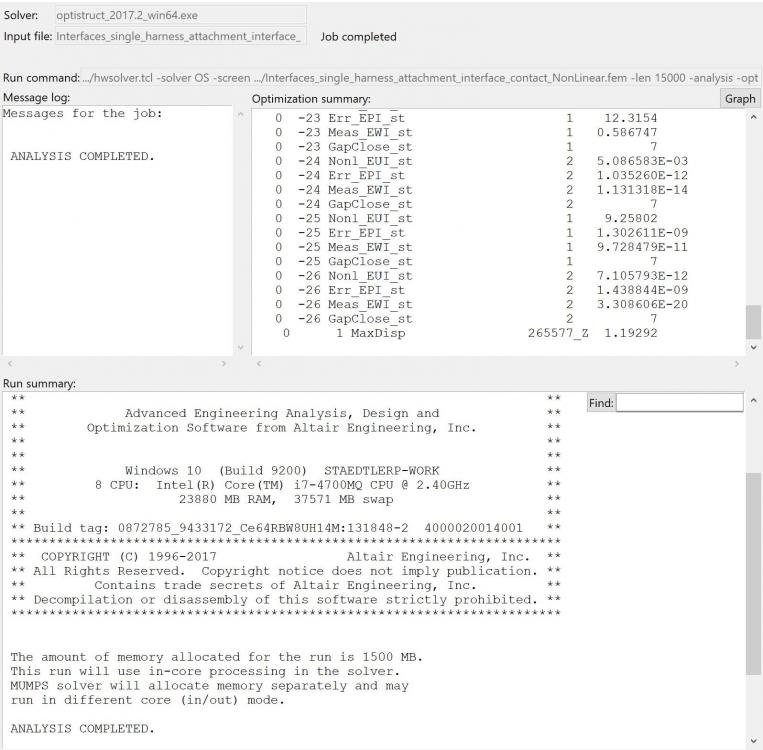Good evening all,
I have tried to perform a structural analysis involving a pin and a slot.
I have set up a Non Linear analysis with contact using small displacement (NLPARM).
At the beginning the pin is not touching the slot, then It touches the slot and the contact start working.
On the pin acts a LOADADD force (Fx+Fz), the other dof are blocked (rotations and traslation along y). Otherwise the slot is fixed (only traslations, no rotations because I think is unuseful).
Attached you can find the model (Hypermesh 2017.2 model).
I have set up a contact with a property type SLIDE and Discret N2S.
Furthermore I have chosen the pin as master and the slot as slave.
The problem is that after a bit it comes up with a result message (analysis completed), but it seems It hasn't performed all the increments I have set up. I think the results have not any sense.
Could you please take a look at the model? Is that solution correct??
Furthermore, there is attached a screenshot of the run panel of Optistuct. In the upper right corner threre are the Iterations column and the Subcase column. I'm not able to understand why the Iteration or Subcase are not matching the number of increments I have set up (30).
What are Non_EUI_st, GapClose_st, etc..??
Do I need to change contact parameters adding, for example, a contact property?
Many thanks you very much for the your help and time
<?xml version="1.0" encoding="UTF-8"?>
Unable to find an attachment - read this blog